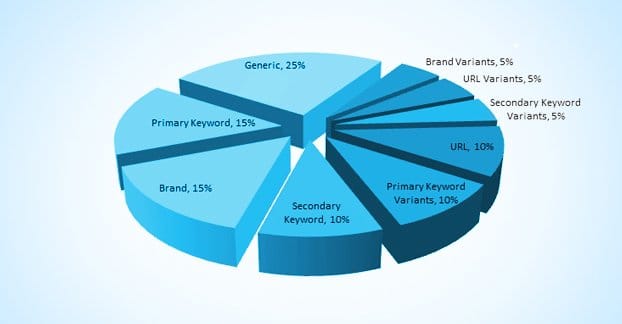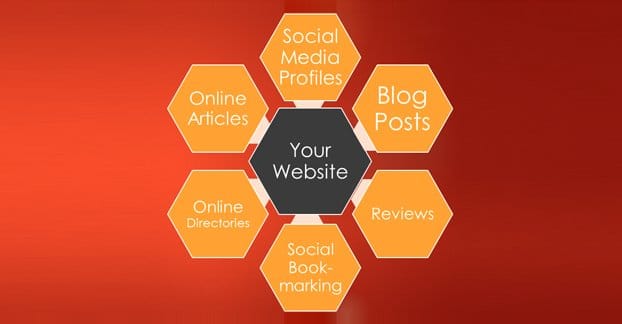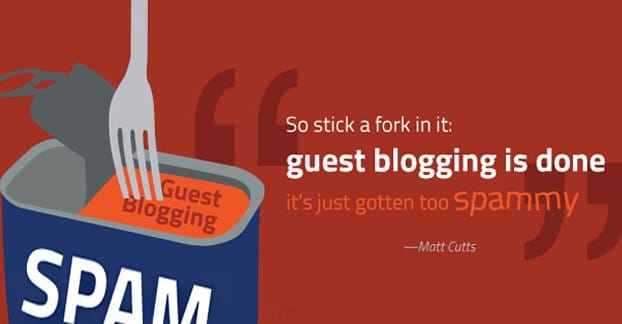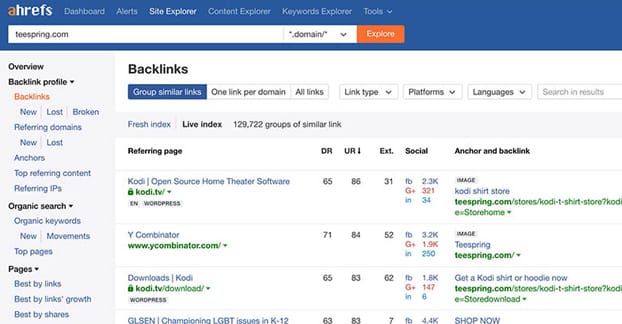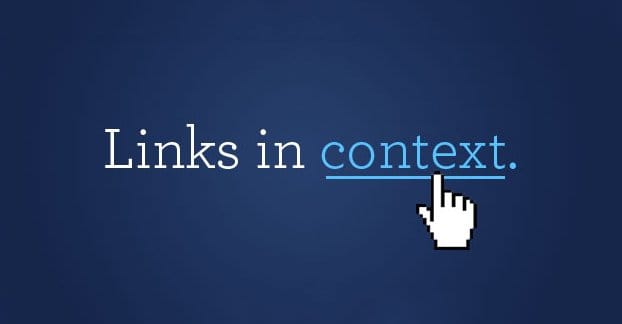If you’re looking to get into a campaign of guest posting, you might wonder how long it will take to see returns from it. You might also wonder just how valuable an individual link in a post might be. I’ve covered both of those topics before, and they’re complex enough that you should go read those posts first.
If you’re working on a guest post campaign and you aren’t see much in the way of value from it, or if you’re considering starting up a campaign, one thing you need to learn about is the concept of the diverse link profile.
Your “link profile” is a snapshot of all of the links from external sites leading into yours. These can come in a lot of different flavors.
- Excellent links, like a link to this site from a top-tier marketing site like Moz or Forbes.
- Good links, like a link to this site from valuable but not top-tier marketing sites, or marketing sites that are a bit outside my demographic.
- Mediocre links, like links to this site from low quality or relatively new marketing sites, or sites that have overly broad topics but aren’t necessarily valuable because of it.
- Poor links, like links to this site from unrelated sites, like a fashion blog or a shoe store.
- Spam links, like links to this site from blogs that scrape content or some random Chinese web forum with bots posting on it.
- Self-made links, like links to this site from other sites I own.
- Purchased links, like links to this site from pretty much anywhere that requires a payment to submit a post.
Some of these links are good, some of them are bad, and some of them are downright deadly. In balance, bad links can be discounted or ignored if you have sufficient value from good links. Some links, like links from my other sites to each other, aren’t necessarily bad on their own, but can become extremely detrimental in volume. If I consistently cross-linked between my sites, I could be accused of running a private blog network and could have all of my sites devalued.
The key here is that every site is going to, over time, accumulate a few links in every category. You’re going to get spam links whether you like it or not. You’re going to get good links, though rarely. You’re going to get bad links all the time. A lot of these will still pass a tiny bit of value on their own, but their real value lies in the fact that they’re natural.
Google will look at your link profile and will determine whether or not it’s natural, meaning it fits the mold of what you can expect a site to look like. If you have too many of one kind of link, problems can occur.
For example, too many spam links and you can be accused of building them yourself or of buying link packages from shady sellers on sites like Fiverr. That can devalue you, though it might not, since Google doesn’t want to facilitate negative SEO attacks. As another example, if you have too many links from one small network of sites, it looks like you have a partnership and you haven’t earned all of those links organically.
Link diversity also matters for certain attributes of links other than just quality of source.
- Type of site. Links should come from social media, blogs, news sites, homepages, landing pages, whatever happens to be relevant.
- Anchor text. Despite best practices, some people will use “here” as an anchor. Others will link to your brand name, some will exact match the keyword or title you’re using, and some will be a less relevant phrase.
- Location on the page. Links in sidebars, links in ads, links in text, links in profiles, links in comments; you want them all.
- Meta attributes. Some links will be marked nofollow; that doesn’t mean they’re bad! Google still indexes those links, they just don’t pass value along. That means they’re still part of your profile. If you have too few nofollow links, it really looks like you’re trying to sculpt your link profile.
Google isn’t stupid. They have a sample size of billions of websites to analyze, they know what outliers look like, they know what fakes look like, and they know artificial sculpting.
Unfortunately, if you’re just aiming for a few repeated guest post slots, like the same place on Inc or Entrepreneur over and over with nothing else to show for it, you’re going to come across as if you’re relying too heavily on one source of links. This goes double if your only source of link on those posts is in your bio; the link is going to be the same every time.
If you’re abusing guest posts and using it as your only link building method, you won’t get far.
There’s a reason, after all, that when I write about finding sites to guest post on, I recommend getting as big a list as possible. It’s why I’m offering a list, and why I’ve made a tool to help find even more you might have missed.
Link diversity helps make your site more resilient to change. If Google updates their algorithm you’re less fragile and can weather the storm with less of a hit. If Google penalizes a site that links to you, you have enough links from other sources to not feel the hit so strongly. If Google decides a certain type of link – from social media, from blog comments, or what have you – is no longer valuable, you have links from other sources to carry the weight.
Link diversity also gives you the all-important benefit of the doubt. If Google starts to detect some unnatural-looking activity coming from your site, they won’t just blindly punish you. They’ll check to see if you have a history of doing shady things, or if you’ve been generally following the rules. If you have a nice, diverse link profile, they’ll shrug and keep an eye on you, but won’t penalize you for what might not have even been your actions.
How to Guarantee a Diverse Link Profile
There are a lot of factors that go into link diversity, as I listed above, and you need to consider all of them in your link building. This goes above and beyond just guest posting; it applies to every link you reach out and build, as well as monitoring incoming links you didn’t directly build to see if you need to focus efforts one way or another. What I’ve done is listed out each attribute and how you can try to vary up the links you get in that way.
Link quality. Obviously, the most valuable links you can get are the ones from the top-tier sites in your niche and the globally-excellent sites. However, you can’t just spend all of your time focusing on them. Any link that is at least partially relevant – any site you can guest post on that’s even somewhat in your niche – will be a link worth pursuing. As an added bonus, a lot of the less valuable but more diverse links will be easier to get, because the sites aren’t used to having guest post interest from legitimate writers.
The bad and spam links you’re going to get anyway. You don’t need to go out of your way to avoid them, or even worry too much about them, unless you have a lot of them. If you happen to have a lot of them, or notice more and more coming in every day, you might want to take some kind of action. Generally you will want to do a link audit and disavow the worst domains so the bad links don’t hurt you.
Link source type. This one is easier to vary up, but harder to get as broad as possible. Generally, the three main types of link sources you’re going to get are blogs, news sites, and social media. You can additionally get links from aggregators, image hosts, and directories, though all of those tend to be less valuable.
Blogs are easy. Blogs are where the majority of your links are probably going to come from in the first place.
News sites are a bit harder, because they want to publish content that is actually newsworthy. If you don’t actually have something newsworthy to bring to the table, they probably aren’t going to link to you. The solution here is to have something newsworthy to say, and send out press releases to convey it. Don’t broad-spectrum mash the press release all over the web, though; that will create a lot of duplicate content and identical links.
Link location on page. There’s not much control you have over this. If you’re not the author of the post or the owner of the site, all you can do is hope the link goes in a good place. If you own the site, you can control the link placement, but then you run into other issues. If you’re writing the post, well, there’s your chance.
Some links should be in the organic content, and some links should be in the bio. In social media, you’ll want both plain raw links and shortlinks. You want profile links on social sites, review sites, and other such locations around the web.
You can also broaden this a bit by coming up with blog comments where you can add a link. Go out hunting for recent content from other bloggers in your industry, and find content of your own that’s relevant to the topic. Write an insightful comment – ideally a paragraph or two – and add your link for further reading. It’s less likely to be filtered when you’re bringing value to the table and have more beyond the link.
Link anchor text. Any time you’re in control of creating a link, try to vary up the anchor text. Avoid using the generic “click here” sort of anchors. I can guarantee you’ll have enough of those from random people linking to your site. I do it all the time, even when I shouldn’t. Sometimes you’ll want to use the full title of your linked post, and sometimes you can use a truncated title. I recommend avoiding exact match keywords, but you can use them occasionally and not be hurt by it. It’s just overuse of exact match anchors that can get you in trouble. You also want to do more generic links to your brand name (like <link>this post on guestpost.com</link> for example), and even some more generic topic-description sentences.
You don’t have to go out of your way to never re-use an anchor. In fact, you should do the opposite; occasionally re-use anchors. Don’t give too much thought to it, just write what feels right. Too few duplicates is also a sign of unnatural link building.
Link meta attributes. This one is easy; just guest post for sites that nofollow their links. Just do it. Yes, I know it doesn’t pass SEO value. I don’t care. It’s valuable for brand awareness, it’s valuable for link diversity, it’s valuable as an implied link, and it’s valuable for traffic. There’s no reason to avoid nofollow links unless you’re trying to artificially sculpt your link profile, and that will just come back to hurt you.
If you follow these guidelines, you should be able to broaden your link profile and enhance its diversity. That, combined with time – more links from more sources over the years – will give you a suitable fallback in case something happens and some of your links are devalued. SEO is always in flux; make yourself as resilient as possible.
 ContentPowered.com
ContentPowered.com
